A crimson tide is sweeping over the watch world of late, with shades of red competing with blues and greens as the next hot color for timepieces. With the latest iteration of its boldly proportioned, masculine chronograph, the Saxon One, Germany’s Tutima dives into the red wave, outfitting the steel-cased timepiece with a combination of dial and strap in “Racing Red” that draws admiring attention across a room.
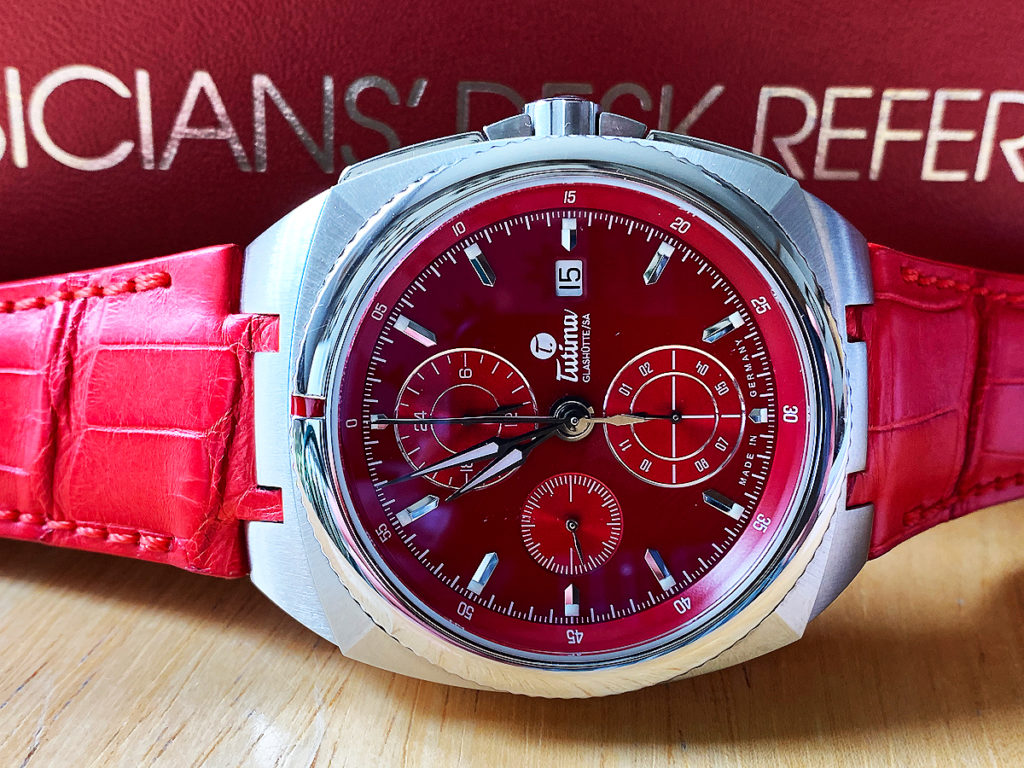
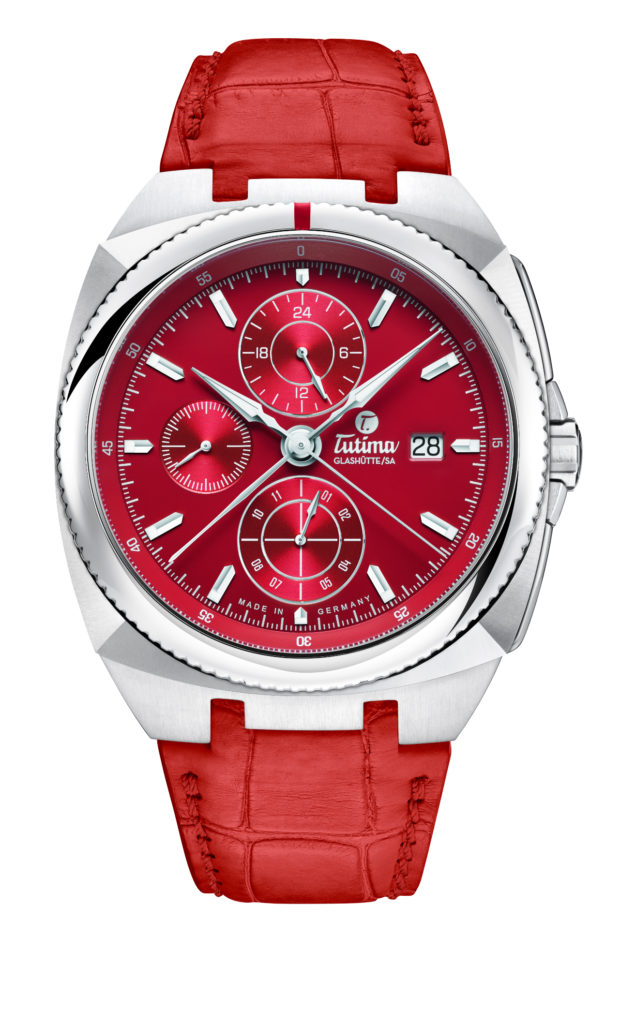
The distinctive case shape of the Saxon One is described by Tutima as “pyramidal,” marrying a round, classically coin-edged bezel to a cushion-shaped casebody with four sharply raised, beveled corners. The bezel moves in both directions in a smooth, seamless motion, and features the hallmark red stripe — two elements of early pilots’ chronographs that could be used in concert by an aviator to aid his orientation in a cockpit. (For many years, before the debut of this fiery red-appointed model, this was the only trace of red found on most Tutima watches.) The sapphire crystal is slightly domed and nonreflective on both sides.
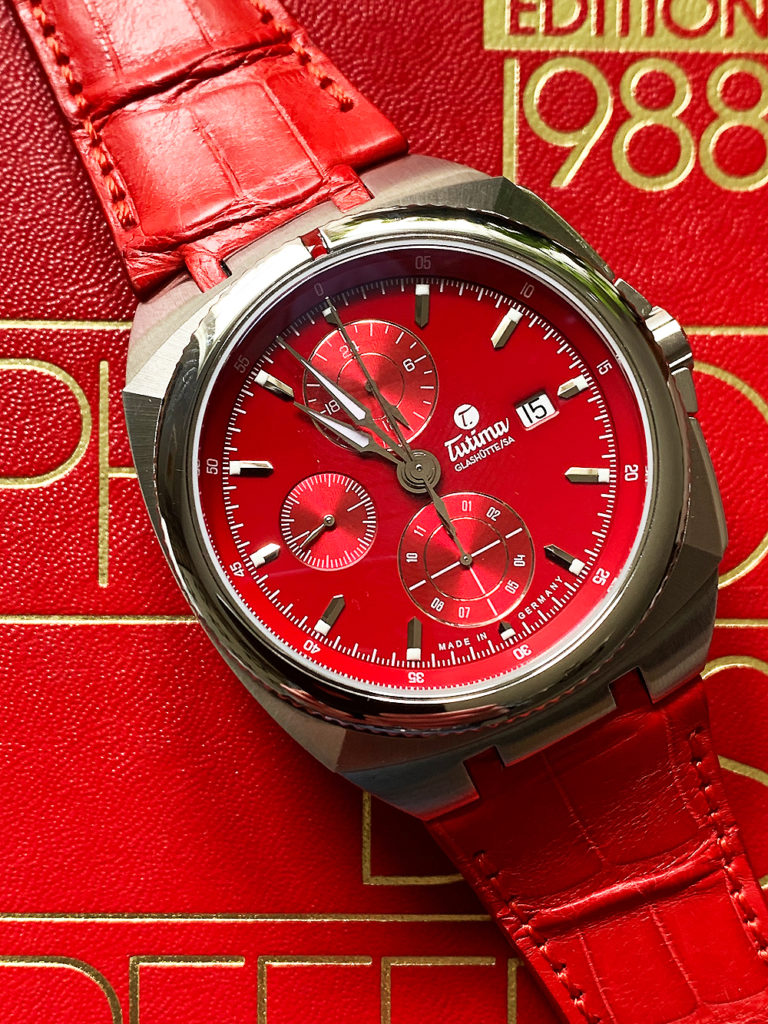
The case is a fairly substantial 43 mm in diameter and 15.7 mm thick, made of surgical-grade stainless steel, and boasts the array of brushed and polished finishes one would expect on a timepiece of this many facets and surfaces. The screw-down crown is close-knit to the side of the case, tightly cradled by crown guards, and the two chronograph pushers are inset into the case in a similarly smooth manner, making for an exceptionally balanced design despite the case’s structural complexity.

The red coloring of the dial is actually two-tone: the subdials have a shiny, sunburst finish, while the main dial surface sports a darker, more matte finish, echoing the color of the flange, with its white minute-scale numerals. The white print contrasts nicely with both the crimson backgrounds and the attractively polished indexes and case elements. The date window at 3 o’clock shows black printed numerals on a white field; from a purely design standpoint, one wishes this display could be white numerals on a red background, but this choice likely makes the date more legible. The tricompax layout of the dial is a bit different from that of many other chronograph dials: the chronograph hours (12 of them total) are tallied on the 6 o’clock subdial (bearing the crosshairs pattern that subtly speaks to Tutima’s military origins), the running seconds appear in the subdial at 9 o’clock, while the subdial at 12 o’clock is not connected to the chronograph at all but a time display on a 24-hour scale, which can be used as a day-night indicator. The chronograph minutes are recorded in the same manner as the seconds, by a central hand on the 60-minute scale emblazoned in white on the dial’s flange.
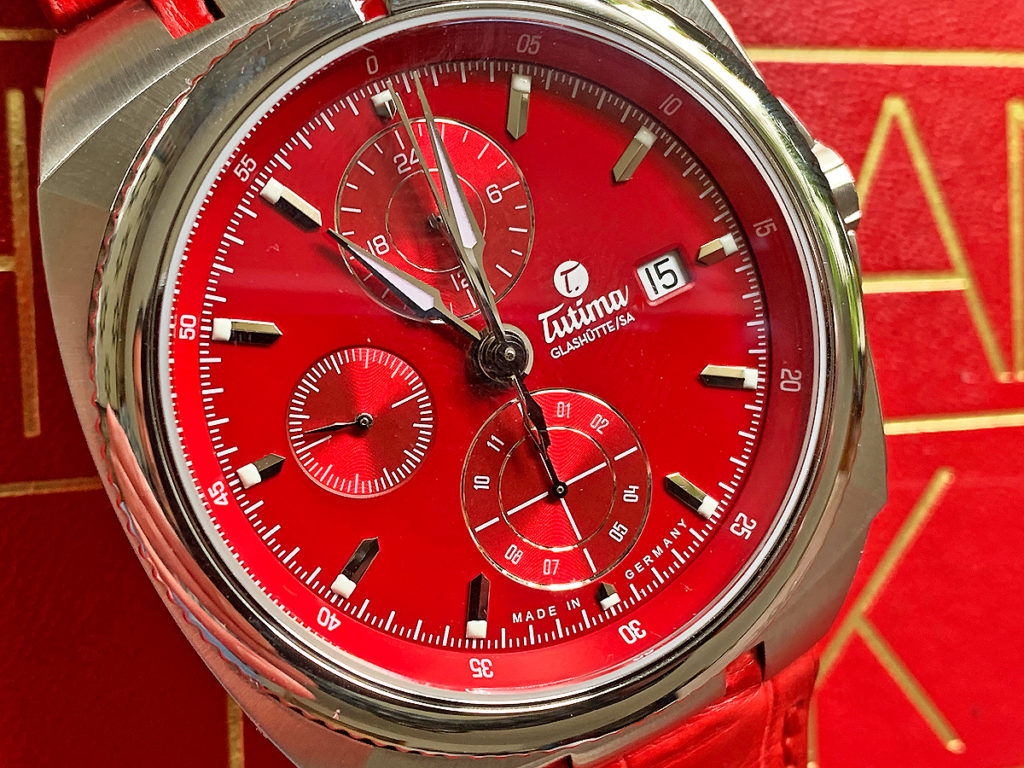
Inside the case, which is substantial but not overly weighty on the wrist, is the self-winding movement, Tutima’s automatic Caliber 521, whose openworked rotor sports a gold Tutima “T” medallion in its center. On display behind a sapphire caseback window (and through the openworked rotor) are the finely finished plates and bridges, elaborately decorated with Glashütte stripes and perlage, and the oscillating balance wheel. The movement, based on the Swiss Valjoux 7750 and meticulously modified and finished at Tutima’s workshop in Saxony, has 25 jewels and holds 44 hours’ worth of power reserve in its mainspring barrel.
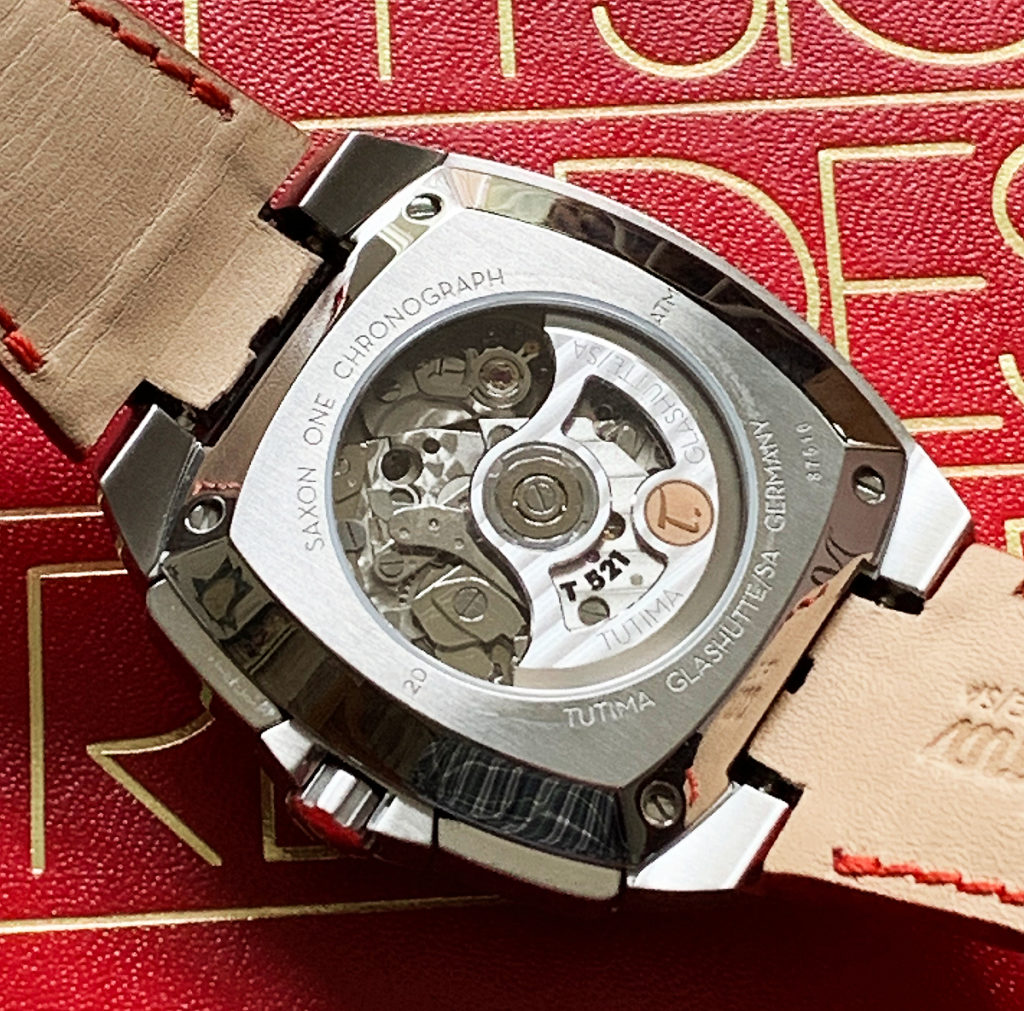
The alligator leather strap, integrated snugly into the case’s curved, hinge-like lugs, is a shade of scarlet red that harmonizes perfectly with the dial (especially the subdials), with large scales at the wide end transitioning to a smaller-scale pattern at the narrower ends. The push-button clasp has a meticulous arrangement of brushed and polished finishes, just like the multifaceted case. The stitching is tone-on-tone red; one wonders if the watch’s designers toyed with the idea of a white contrast stitching and abandoned it as just a tad too jarring. If so, bravo to them. The Saxon One Chronograph is also offered on a steel bracelet, which tones down the vibrant red-on-red character a bit, but still demands attention with its array of facets and finishes.
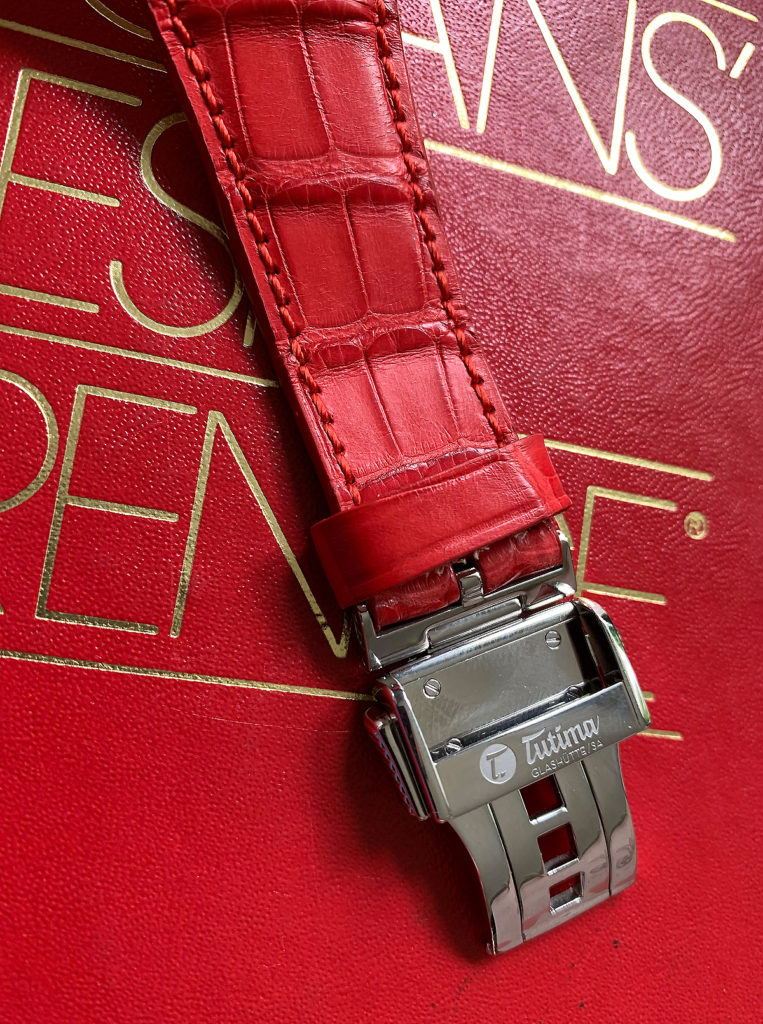
The Tutima Saxon One Chronograph Racing Red retails for $6,100 on the red leather strap and for $6,500 on the steel bracelet.
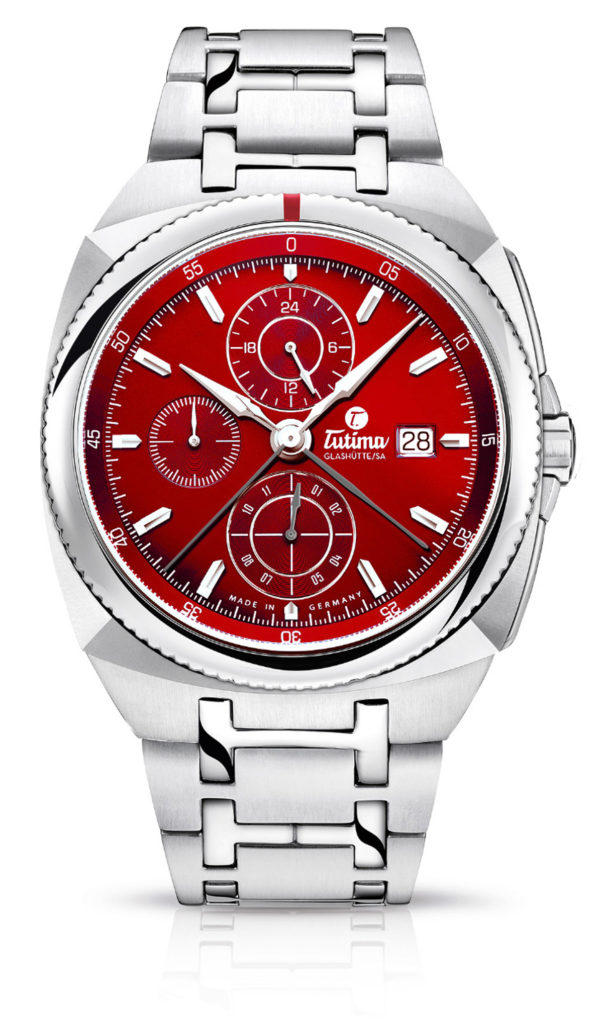
| Manufacturer: | Tutima Glashütte |
| Reference number: | 6420-08/07 |
| Functions: | Hours, minutes, small seconds, date, chronograph with central seconds and minutes counter and 12-hour subdial, 24-hour display |
| Movement: | Tutima Caliber 521, automatic, based on Valjoux 7750, 25 jewels, 44-hour power reserve |
| Case: | Stainless-steel, screw-down crown, bidirectional rotating bezel, domed sapphire crystal with nonreflective coating on both sides, sapphire exhibition caseback, water resistant to 200 meters |
| Bracelet and clasp: | Integrated red alligator leather strap with stainless steel folding clasp or stainless steel bracelet with folding clasp |
| Dimensions: | Diameter = 43 mm, height = 15.7 mm |
| Price: | $6,100 (on strap); $6,500 (on bracelet) |


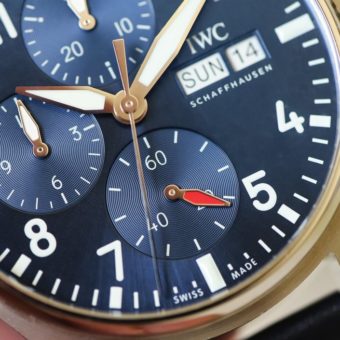
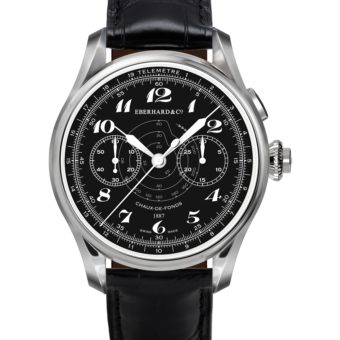
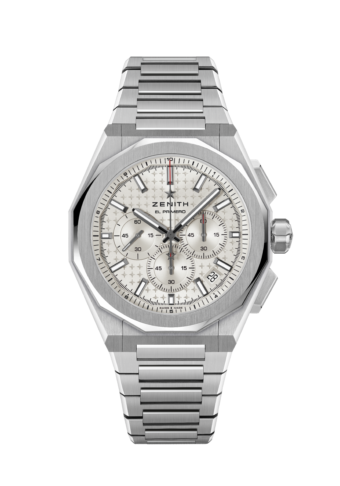

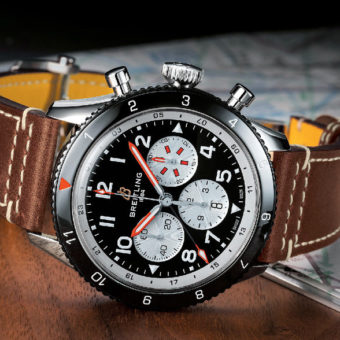
Wow
Loving this crimson tide and this one especially